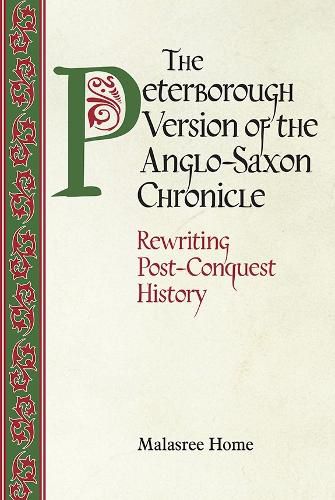Readings Newsletter
Become a Readings Member to make your shopping experience even easier.
Sign in or sign up for free!
You’re not far away from qualifying for FREE standard shipping within Australia
You’ve qualified for FREE standard shipping within Australia
The cart is loading…






In the twelfth century, a version of the Anglo-Saxon Chronicle was rewritten at Peterborough Abbey, welding local history into an established framework of national events. This text has usually been regarded as an exception, a vernacular Chronicle written in a period dominated by Latin histories. This study, however, breaks new ground by considering the Peterborough Chronicle as much more than just an example of the accidental longevity of the Chronicle tradition. Close analysis reveals unique interpretations of events, and a very strong sense of communal identity, suggesting that the construction of this text was not a marginal activity, but one essential to the articulation of the abbey’s image. This text also participates in a vibrant post-Conquest textual culture, in particular at Canterbury, including the writing of the bilingual F version of the Chronicle; its symbiotic relationship witha wider corpus of Latin historiography thus indicates the presence of shared sources. The incorporation of alternative generic types in the text also suggests the presence of formal hybridity, a further testament to a fluid and adaptable textual culture.
Dr Malasree Home teaches at Newcastle University.
$9.00 standard shipping within Australia
FREE standard shipping within Australia for orders over $100.00
Express & International shipping calculated at checkout
In the twelfth century, a version of the Anglo-Saxon Chronicle was rewritten at Peterborough Abbey, welding local history into an established framework of national events. This text has usually been regarded as an exception, a vernacular Chronicle written in a period dominated by Latin histories. This study, however, breaks new ground by considering the Peterborough Chronicle as much more than just an example of the accidental longevity of the Chronicle tradition. Close analysis reveals unique interpretations of events, and a very strong sense of communal identity, suggesting that the construction of this text was not a marginal activity, but one essential to the articulation of the abbey’s image. This text also participates in a vibrant post-Conquest textual culture, in particular at Canterbury, including the writing of the bilingual F version of the Chronicle; its symbiotic relationship witha wider corpus of Latin historiography thus indicates the presence of shared sources. The incorporation of alternative generic types in the text also suggests the presence of formal hybridity, a further testament to a fluid and adaptable textual culture.
Dr Malasree Home teaches at Newcastle University.